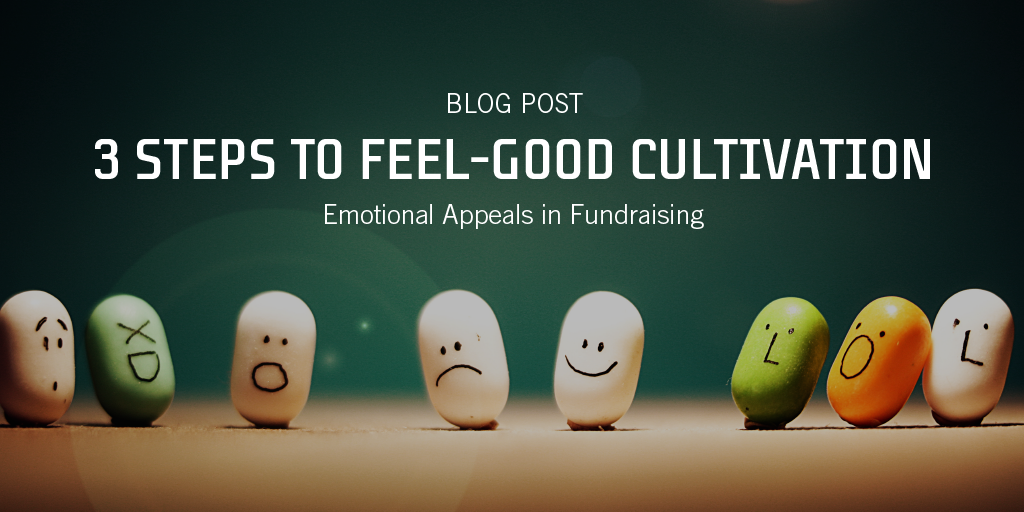Anyone charged with writing an appeal letter or grant narrative—really any kind of writing where the objective is raising dollars—knows that it’s easy to get lost in facts and figures related to the program you’re fundraising for or the donor you’re trying to cultivate. Being as many people respond to numbers and other data, that’s not always a bad thing… but it can get very boring very quickly. At some point we’ve all been guilty of relying on the data to tell the story, neglecting the fact that sometimes the writing just needs a little TLC.
All great storytellers know that tapping into the emotions of the reader is key to getting them hooked. Those warm and fuzzies will play a huge role in forcing the decision to make that contribution because much of our decision-making comes from the subconscious mind.
Here are three ways that you can tap into emotion in your communications:
1. Think beyond the rational mind.
There are two ways that you can talk about your organization’s work in a way that will yield some kind of donor response: simple or complex. Simple “sells” are for people who can make quick, easy decisions often based on numbers:
This year we served 250 students through our afterschool program. As a result of participating, we saw that our students scored 75% higher in math and science than their peers who were not enrolled in the program. Your continued support will allow us to expand the program to 5 more schools, thereby allowing us to more than double the number of students served within the district.
The busy executive or even corporate foundation officer who has 50 more of these to read might just forward this off to another department to cut you a check. The downside is that it’s possible you’re missing out on a larger grant she could have awarded you if only you laid on the emotions a little thicker. Worst case scenario: Your melange of words and numbers was totally ignored. The truth is, this is a much more complex tale to tell and the recipient can easily be overwhelmed by the figures you’re throwing at them. In the end, they’ll make a decision based on intuition. They’re left wanting to know How was one of the students’ lives changed? How does it relate to someone in my own family? How can this program be sustained long-term? Never leave them wondering, leave them captivated.
See also: How Marketing Helps Build Relationships that Drive Business
2. Be authentic.
There really is no place for smoke and mirrors in successful fundraising. No one likes a phony, especially not donors. Being as this business is all about relationship building, your best bet is to be real and make your communications honest and relatable. This tactic makes people feel connected and works to build trust with your organization. Moreover, authenticity establishes a meaningful connection that compels donors to act in response.
Try using real-life scenarios based on those you serve or even as a steward of your organization. What have you experienced over the years that compelled you enough to dedicate your career to driving change in this area? Reach out to the beneficiaries of your programs for testimonials and write their story. Nothing works better than making the person you’re trying to connect with say, “I know exactly what that feels like.”
See also: Separating Mars from Venus
3. Think ahead and plan for the long-term.
Show an interest in your patrons beyond the donation. Keep them posted on how things are going, invite them to appeal-free events as a thank you. Provide them with useful information that creates emotional engagement and transcends your immediate need. The objective here is to foster a meaningful, long-lasting relationship with someone who is helping to sustain your organization and help it fulfil its mission.
Particularly with prospective donors, instead of trying to convince them to “donate now” maybe you invite them to a fun event your organization is throwing so that they can experience first-hand the work you’re doing and see the faces of the people behind that work. Your ultimate goal is to make them want to be a part of what you’re doing.
See also: Kicking Your Fundraising Into High Gear
What next?
Emotion and brand connection works over time. Be real, be relatable and invest in your donors long-term. It takes more effort to develop campaigns like this, but you will reap the benefits in the long run. These techniques can be applied across a variety of channels, too.
Check out the video below that we produced for the Waldorf School of Garden City to see this strategy in action!
Like what you see? Stay in touch!
You might also like:
+ How Marketing Helps Build Relationships that Drive Business
+ Separating Mars from Venus
+ Kicking Your Fundraising Into High Gear











